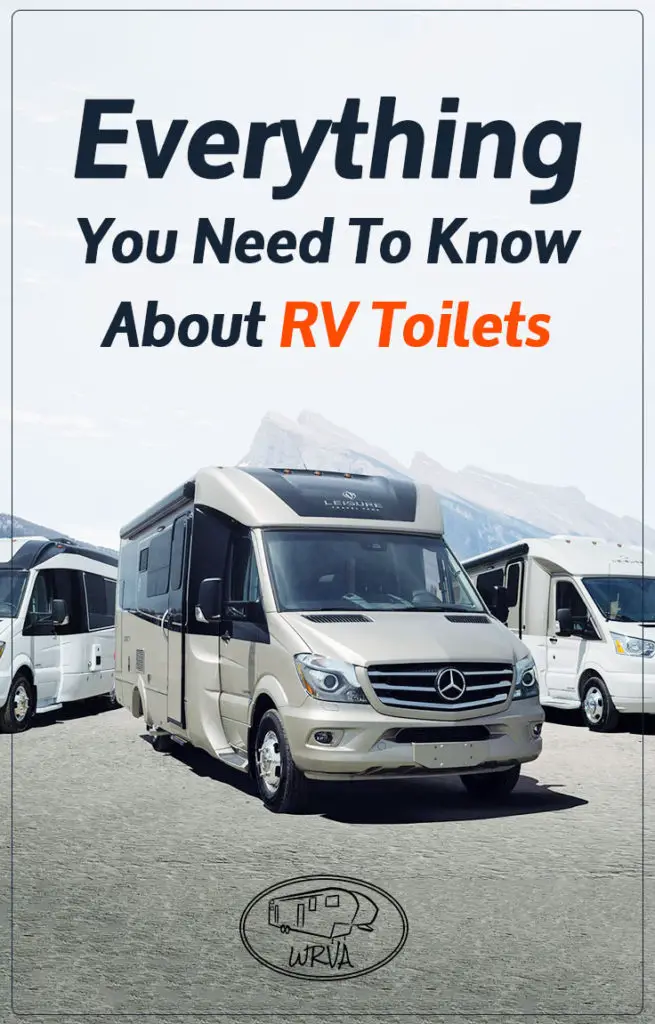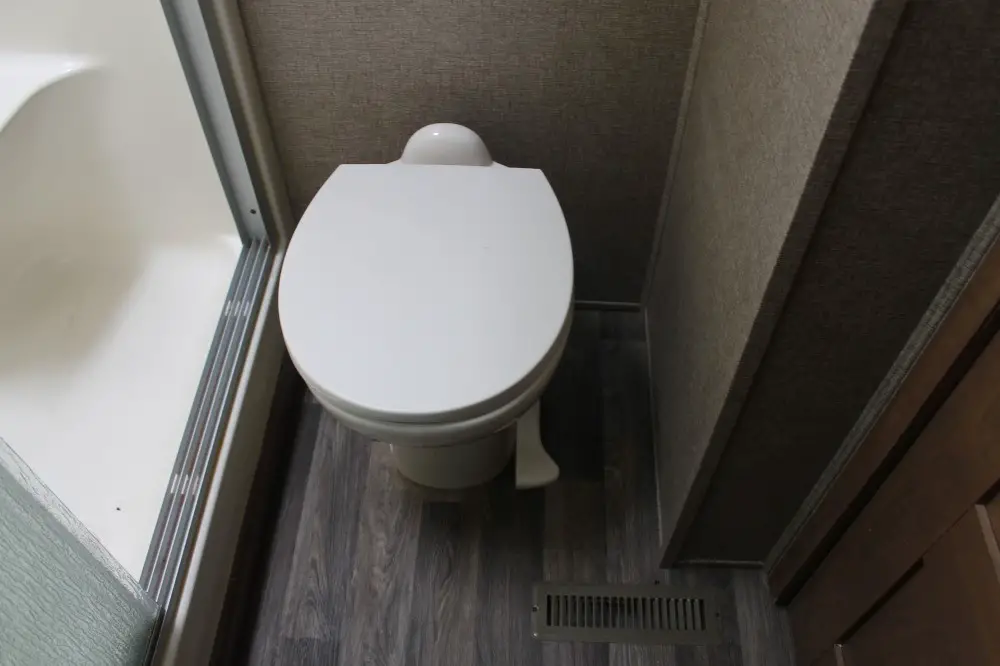There are so many potty jokes I could make here…but I’ll try to keep them to a minimum. Getting out into nature can pose certain challenges, particularly when “nature calls.” Luckily, no matter what type of camping you’re doing, there is a toilet to fit your needs. Maybe you have one already on your rig and you’re just curious how it works, or you are looking for something portable for that backpacking trip you’ve been planning.
The basic function of RV toilets is to store the waste until it can be disposed of later. There are several types of camper toilets, but one thing they all have in common is that they conserve water because unlike at home you have a limited supply of water and a limited space to store the waste.
Here are the different types of camper toilets and a general understanding of how they work.
Portable vs. Built In
There are really two main types of toilets for camping. One is designed to truly be portable and just tossed in your vehicle when you’re getting on the road, the other has been built into your trailer or RV. So let’s look at some basic differences.
Portable Camper Toilet

As mentioned, this one is meant to be taken on any type of camping trip. They are usually very lightweight (without the water) and made of durable materials. The idea behind these is that they can withstand the rugged outdoors.
Some are made for solo travelers and can even be taken on backpacking trips. Others have larger holding tanks that make them usable for a group of 4 campers and can hold a week’s worth of waste. Yummy.
Built In Toilet

These are the toilets that have already been installed into whatever type of RV you might be using. If you’re fortunate to have a bathroom on board, then this toilet is your throne away from home! Sorry, couldn’t resist.
Macerating Toilets
These are also built in toilets that you will find in more of the higher-end motorhomes. The difference between macerator and regular built-in toilets are that they basically process the waste before it gets sent to your holding tank. It looks a little different too. They are larger at the base because it basically has a blender inside that turns everything to a liquid before it reaches you tanks. These have 2 flush buttons, for #1 and #2. A drawback is that they require power to operate, but they do help in keeping your tanks cleaner.
Composting RV Toilets

RVs don’t usually come with a composting toilet, but if you plan to do a lot of camping without water and sewer hookup this might be a conversion you should consider. Composting toilets separate the liquid and solid waste. Liquid waste is then disposed of while the solid waste breads down into compost that can be used as fertilizer if you choose to.
So let’s see how they work.
The Design
If you’re worried about whether or not your bum will be comfy on that camper toilet, let’s take a look at how they are made.
- Toilet seat
- This is usually pretty standard size. Lightweight but very durable. Again, think rugged.
- Trap
- You will see a difference from the home toilet design inside the toilet bowl. Instead of an open hole where the water cyclones down into, there is a trap that only opens and closes when you “flush.”
- Freshwater tank
- Whether it’s part of the portable toilet or being held in a tank on your RV, there will be a source of water for all your flushing needs.
- Keep in mind, camper toilets conserve the amount of water used when flushing than the ones at home
- Some people add chemicals to their freshwater to just help things stay smelling fresh and clean.
- Waste storage tank
- On the portable camper toilet, the waste storage tank can hold usually a few gallons and is all in one piece. This helps keep those unsavory smells and liquids inside.
- On the RV, this is also known as your “black tank” and can hold quite a bit more than the portable one. Your waste tanks need treatment chemicals added to breakdown waste and keep your RV smelling fresh, check out this article for tips on selecting the right treatment chemicals.
- Drainage system
- This is usually a valve of sorts that you can use to empty your waste storage tanks.
- Lever
- And of course, no matter what type of toilet you’re using out there, it has a way to flush it. Usually the lever is closer to the floor, either on the side or in the front for your feet to do the flushing. A bit more sanitary actually! Now I’m wondering why regular toilets don’t have this feature…
- A tip here is that you might have to hold the lever in a half-open position sometimes to fill the toilet bowl with water first before fully flushing
The Mechanics
So now that we have a basic understanding of the different types of camper toilets and their makeup, let’s get to the down and dirty of the mechanics.
Ok, so it’s time to relieve yourself, how is this nifty little toilet going to take care of your business?
- Once you press down on that lever, water from the fresh water tank gets pushed out in to the bowl of the toilet. (Usually no more than about 2 quarts of water is used each time.) Some built in toilets also have a little sprayer to give it a little extra rinse.
- The trap will open for everything to get flushed into the waste storage tank or “black tank.”
- The trap will then close after you release the lever and help keep things odorously clean.
And you’re done!
Wrap Up

Who knew there was so much to know about the commode? But really, like I said, they’re not that much different from your regular toilet at home. It’s just a matter of whether or not you already have one installed or want to get a portable one. The biggest difference from your household toilet is something I will address in another article…emptying those waste storage tanks. Thankfully we don’t have to do that part at home, but on the road you will want to make sure you know how to do it properly, trust me. Hopefully reading about toilets didn’t make you feel like you need to “go”.
Thanks for reading, please share this article if you enjoyed it.

